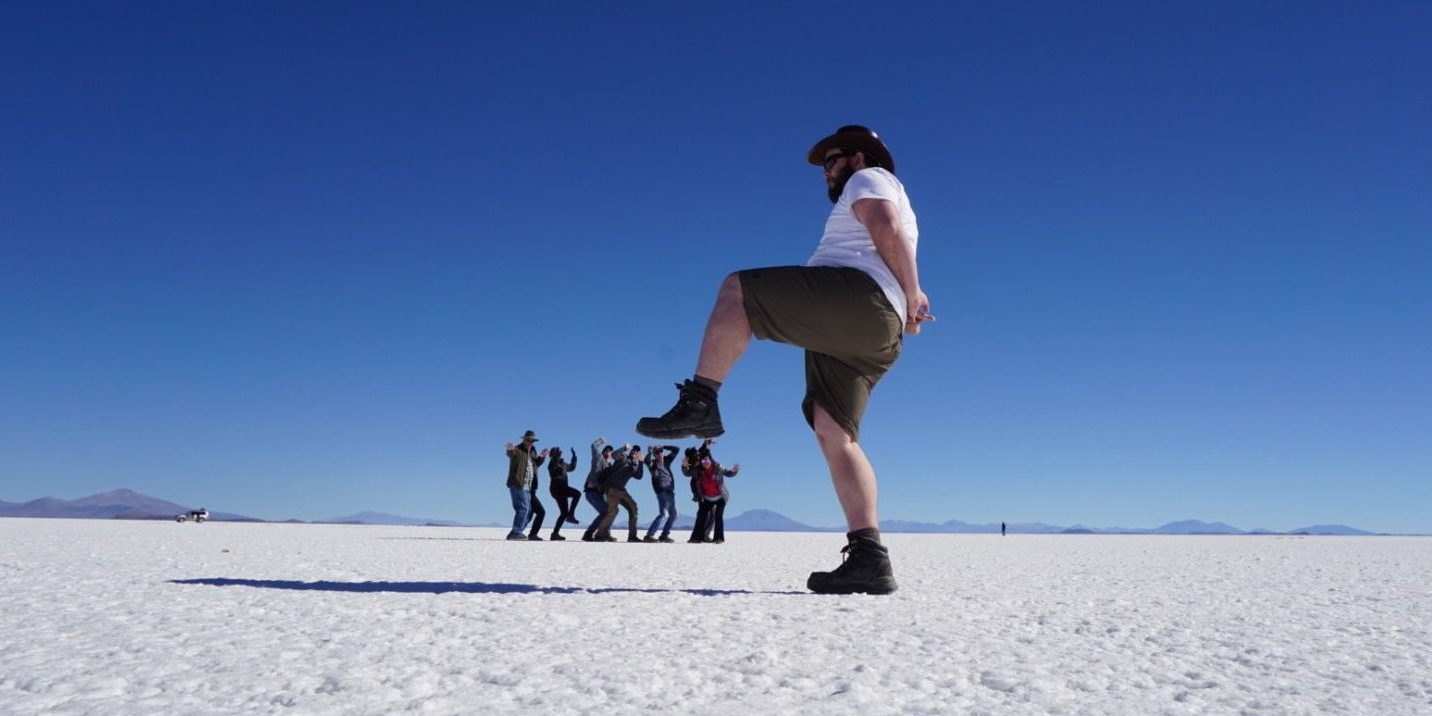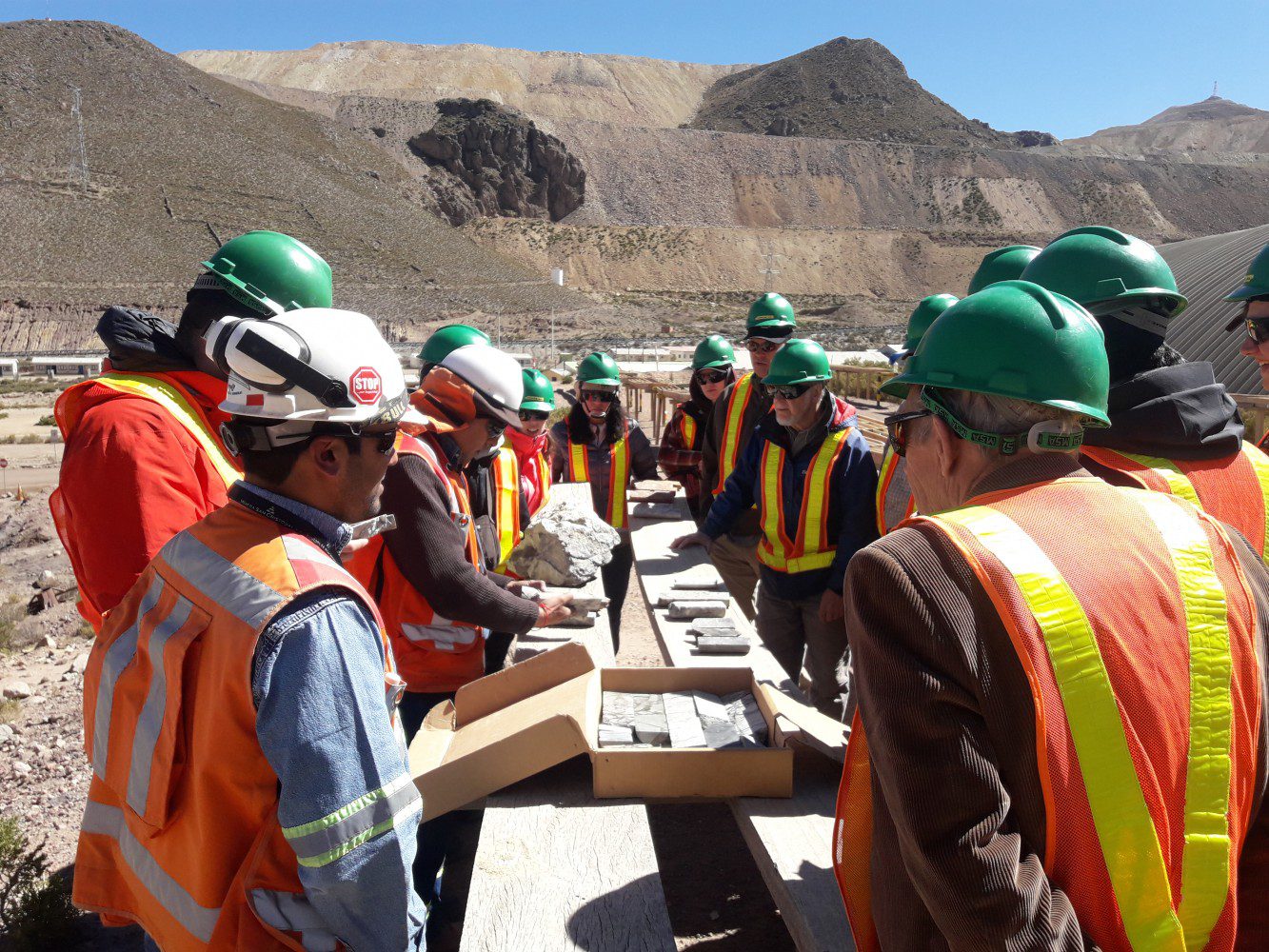Straddling the border of Bolivia and Peru, Lake Titicaca sprawls across the landscape as one of South America’s largest lakes – a geological wonder. From a bird’s eye view, patches of pale-yellow dot the lake’s surface; floating islands fashioned of interwoven totora reeds and roots. For hundreds of years, the Uros people have made their home here. They’ve not only created islands from the totora reeds but have woven boats, built houses, and used them for medicine and food.
It’s a place where human ingenuity is as impressive as the views. That’s why you’ll find University of British Columbia’s (UBCs) Geology students exploring here alongside industry professionals, as part of a unique opportunity to learn from each other, locals, and landscapes.
Fieldwork with a View
Annually organized by UBC’s Society of Economic Geologists (SEG) student chapter, the trip takes students and mining professionals on a whirlwind tour of mines, geological wonders, and cultural experiences. This May, eight UBC students and ten mining industry professionals trekked by bus across Peru and Bolivia for three weeks, seeing mines and other rich experiences on-route.
Linda Dandy, a UBC ‘81 grad and professional geoscientist, was one of the industry members on this year’s trip. Industry members pay to attend the trip as individual sponsors, which then subsidizes the costs for attending students.
“The students do all the organizing,” Linda said. “They pick the locations, they book all the flights, the accommodations, the mine tours, everything. So, it’s quite nice for the industry people to just go along. All we have to do is get up in the morning and be told where we’re going.”
Going Deeper
The group visited seven mines across Peru and Bolivia. Their time in Bolivia was particularly memorable, as it included a tour of the infamous Cerro Rico mine (known as the ‘mountain that eats men’).
“It’s an old mine started by the Spaniards, and over the years it’s gotten pretty rundown. It’s still being operated, but very poorly,” Linda said. “The following day, we went to the San Cristóbal mine, which is also in Bolivia. It’s one of the best operated mines that we’d ever seen. It was like one of the other industry guys said: ’We saw two end members of the mining industry in two days on this trip.’”
Andrew Steiner, a PhD student at the University of British Columbia adds, “The disparity between the two mines was immense. It served as an important reminder about the responsibility we have in this industry to ensure that mining has a positive impact within society.”
An early morning visit to Southern Copper Cooperation’s Cuajone mine in Peru was another highlight. “Cuajone was the most technologically advanced mine we visited,” Xueya Lu continued. Xueya was one of this year’s trip leaders, and a current Master’s student at UBC. “The mine operates human facial recognition technology, and the mine has cameras and sensors sending real-time data of the operating site to the office.”
The students were also shown 3D geological models of the deposit, including ones created using Seequent’s Leapfrog Geo software for geological modelling and analysis.

In Awe of the Earth
Beyond the mines, students and industry professionals toured natural wonders that local people have made their own.
Of course, they had to take a pit stop at Salar de Uyuni (the world’s largest salt flats at over 10,000 km2). The salt flats contain huge amounts of lithium and sodium resources, the latter of which is currently being mined by the Bolivian government. They’re also famous for their perspective-bending optical illusion photos.
The group then went on an airplane ride to see aerial views of the Nazca Lines in Southern Peru when some unexpected free time arose.
According to Sterling Vanderzee, a PhD candidate at UBC, “The flight tour doubled as a roller coaster ride as the pilots would do steep turns overs the lines so we could look directly down at them from inside the plane.”

Take Home Advice
Besides unforgettable experiences, geology students get a chance to explore possible careers and get expert advice.
“Another highlight for me was getting to know the ten industry members as we road-tripped together,” said Sterling. “It was inspiring to hear about their different career paths in mining, career advice to incoming the generation, and about their entrepreneurial ventures.”
“We have people ranging in age from 20 years old to in their 70s, and everyone gets along really well,” said Linda. “We’re all there for a common purpose and it’s really quite incredible.”
As for that career advice? Linda sums it up, “I guess, I want to say – do what you want to do. Don’t get stuck in research or exploration if you don’t want to. There are so many opportunities out there.”
Inspired by their peers, the local people, and industry experts, each student left with more than beautiful photos. As a career path, geology opens up a world of possibilities.
This blog is written by Seequent, a global leader in the development of visual data science software and collaborative technologies. Seequent and AME (along with the industry attendees) were sponsors of this trip.
All photos shown in this blog were provided by the trip attendees. To get in touch with the UBC SEG Student chapter, please contact [email protected].

